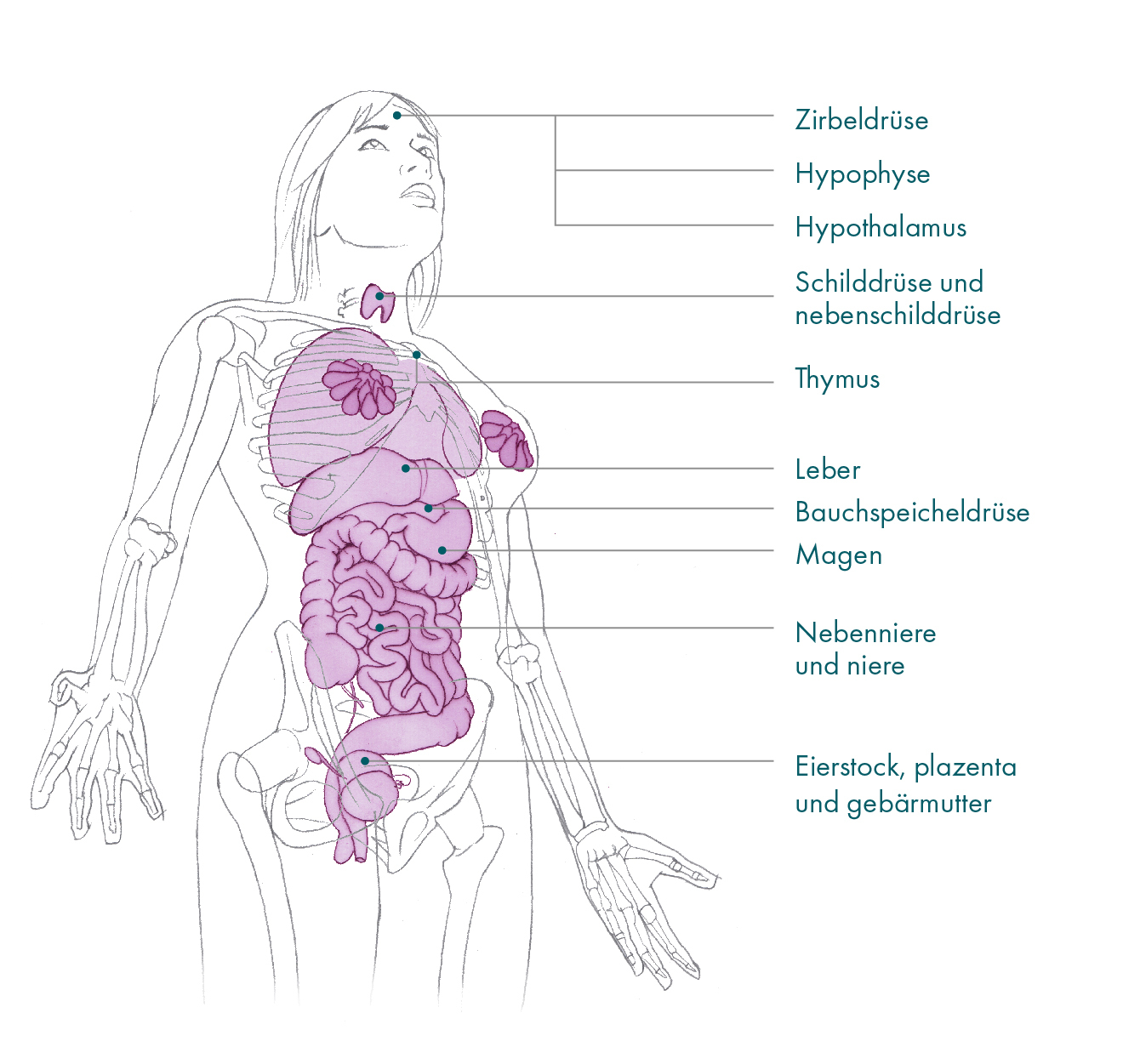Los tumores neuroendocrinos se encuentran principalmente en: 3
- El tracto digestivo:
- Esófago (garganta)
- Estómago
- Intestino delgado (tripas)
- Apéndice
- Colon
- Recto (conducto dentro del ano)
- Un pulmón
- El páncreas
- Las glándulas tiroides, paratiroides, suprarrenales o pituitaria
También hay células neuroendocrinas en los riñones, el hígado, la próstata, la piel, el cuello uterino, los ovarios y los testículos.3
Hormones are made in several parts of the body; this is the endocrine system.
Neuroendocrine tumors (NETs) are rare tumours that start in neuroendocrine cells, and all the body systems above can be affected.4

Neuroendocrine tumors (NETs) are rare tumours that start in neuroendocrine cells, and all the body systems above can be affected.4
When a NET is in the gastroenteropancreatic (GEP) system it is known as a GEP-NET; so GEP-NETs are neuroendocrine tumours (NETs) that appear in the digestive tract or the pancreas.3
GEP-NETs are a complex part of medicine, because every case is different:3,4
- Some of the tumours cause symptoms and others don’t
- Some of the tumours release extra hormones that can also cause symptoms, and others don’t
- Some GEP-NETs grow quickly, while others grow more slowly
- The effects of a GEP-NET can vary a lot depending on where it started
REFERENCES:
-
MSD Manual. Endocrine function. Disponible en:https://www.msdmanuals.com/home/hormonal-and-metabolic-disorders/biology-of-the-endocrine-system/endocrine-function (consultado en septiembre de 2020)
-
Susanne Hiller-Sturmhöfel and Andrzej Bartke. The Endocrine System: An Overview. Alcohol Health Res World. 1998; 22(3): 153–164.
-
Canadian Cancer Society. The Neuroendocrine system. Disponible en:https://www.cancer.ca/en/cancer-information/cancer-type/neuroendocrine/neuroendocrine-tumours/the-neuroendocrine-system/?region=on Consultado por última vez en septiembre de 2020.
-
CRUK. What are NETs? Disponible enhttps://www.cancerresearchuk.org/about-cancer/neuroendocrine-tumours-nets/what-are-nets Consultado por última vez en septiembre de 2020.


